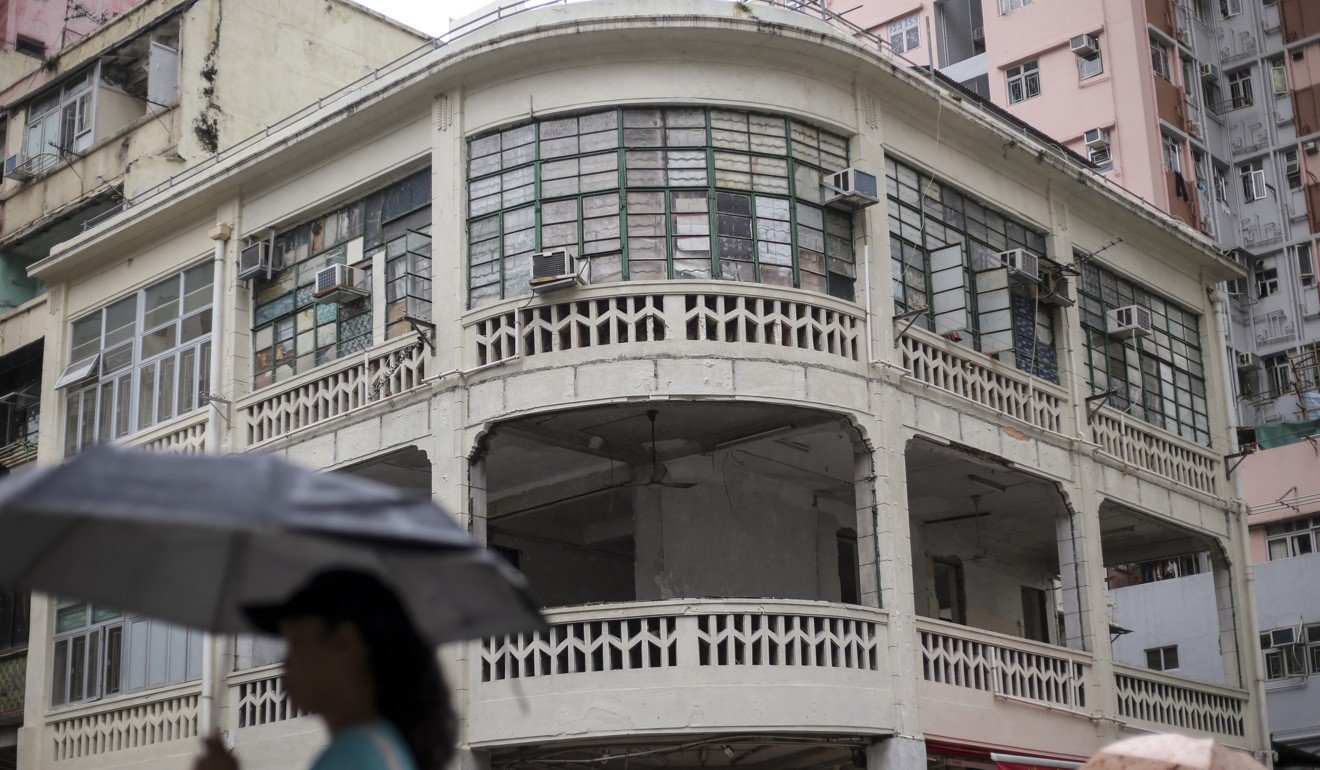
Rare example of pre-war Hong Kong architecture to be destroyed after building owners ignore government pleas to save it
- Chinese tenement block in Sham Shui Po owned by four companies
- Buildings Department gives permission for rare site to be demolished as Development Bureau tries to get owners to talk
Authorities in Hong Kong have failed to save a rare, pre-war Chinese tenement block from the wrecking ball, despite weekly attempts to get in touch with the owners of the historic property for the past five months, the Post has learned.
The Buildings Department has approved a proposal submitted by the owners of a 86-year-old walk-up in Sham Shui Po for it to be demolished.
“Despite various attempts to approach the owners … [we] have not received any response. Notwithstanding, we will continue to reach the owners,” the Development Bureau told the Post, adding it was ready to discuss possible options for preserving the block.
The go-ahead was given after government heritage advisers in March proposed a grade two status for the building, the second in a three-tier scale that is not legally binding. The Antiquities Advisory Board has yet to consider views received during a public consultation before confirming the grading when it meets on June 13.

The tenement is owned by four separate companies, all of which have the same eight directors, including Lo Yuk-sui, chairman of Regal Hotels International Holdings.
Four of the other seven directors sit on the boards of three other firms, including Regal, Century City International Holdings, and Paliburg Holdings, which have businesses ranging from property development to hotels and aircraft leasing.
Douglas So Cheung-tak, the advisory board’s chairman, said he was disappointed with what he called the owners’ lack of transparency.
“Given that there is so much concern about this building’s heritage value, a big corporation has the social responsibility to at least respond, so we can sit down together and have a dialogue,” So said.
“While the owners have the legal right to tear it down, I hope they consider doing what is reasonable and fair to the rest of society,” he said. “Development and conservation do not have to be pitted against each other. You can have the best of both.”
So said antiquities officers had tried to contact the owners and the consultant in charge of the project every week since January, after developers submitted a demolition proposal for the site.
A spokesman for Paliburg Holdings declined to comment.
Land Registry data showed that one of the four holding companies of the tenement also partially owns a four-storey building near the tenement.
The tenement is one of only three corner buildings built in the same tong lau style left in the city, standing on the corner of Castle Peak Road and Fat Tseung Street with its distinctive curved facade.
A visit by the Post on Thursday showed that the top floor, originally designed for a rooftop with two flats, had been carved up into five 100 sq ft cubicles. Almost all of its tenants in the building had been evicted in recent months, except for a few families and a traditional Cantonese roasted meat restaurant on the ground floor.
The owners will now only need one final procedural step from the Buildings Department – consent to the commencement of demolition – before they can knock the block down.
Under the heritage conservation policy, the government can offer economic incentives and assistance to encourage the owners of graded historic buildings to preserve their properties.
But unlike monuments, graded historic buildings do not enjoy legal protection, which means owners can significantly change the buildings or even redevelop them.
According to the antiquities office’s appraisal, the tenement’s architect George Grey also designed the grade one historic State Theatre building in North Point, which is being partially preserved. Grey’s firm also designed the landmark Peninsula hotel in Tsim Sha Tsui in 1928.
“[The building] was built in a historical context during the rapid growth of both the population and economy of Sham Shui Po and New Kowloon at the time, and has thus borne witness to not only the development of Sham Shui Po, but also New Kowloon,” the appraisal reads.
The Castle Peak Road establishment would likely face the same fate as another in the same style – Tung Tak Pawn Shop in Wan Chai.
Built in the 1930s, it was demolished in 2015 despite a petition signed by 2,000 people to save the grade three building.
One of the few successes was Lui Seng Chun, a shophouse built in a similar style and awarded a grade one status. With financial assistance from the government, it was revitalised by Baptist University in 2008 and turned into a Chinese medicine centre and tea shop.

